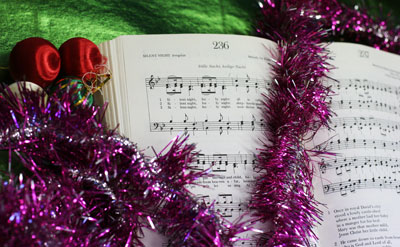
WE HEAR them every year seeping through shopping centre muzak, but Christmas carols are more than just joyful tunes for the season.
It is thought the word ‘carol’ comes from the French word ‘caroller’, which means a circular dance.
Carols were originally sung by groups of musicians in the streets, and were not permitted inside churches.
The singing of carols was introduced to services in the church by Francis of Assisi in the late 12th century.
Many of the common Christmas carols we sing today are relatively new, with a lot dating from the 1700s.
The main reason for this was that Oliver Cromwell banned Christmas carols between 1649 and 1660 in England, as he believed Christmas should be a solemn day.
Because of this, most of the ancient carols were lost.
One of the oldest and most common carols is O Come, O Come Emmanuel.
William E Studwell said of O Come, O Come Emmanuel in his 1995 book The Christmas Carol Reader, “It was the oldest of carols, it was the newest of carols”.
The oldest because the Latin text is thought to date back to a 13th century French manuscript. It is also suspected the music is from around the 15th century, but this is not proven.
It is called the ‘newest’ because the two were not combined into a carol until the last 1800s by well known hymn writer John Mason Neal.
God Rest Ye Merry Gentlemen, an old English rhyme, is also one of the oldest well known carols, dating back as far as the 1500s.
Carols were often sung to different tunes as they were published as lyrics only and it was up to the people singing to decide which tune they preferred.
Some very famous composers have written tunes we now sing every year as Christmas carols.
The text to While Shepherds Watched Their Flocks was written by Nahum Tate in 1703 and is combined with a melody from Handel’s opera Siroe.
Handel’s Messiah also lends a melody to Joy to the World.
Hark! The Herald Angels Sing, written by Charles Wesley in 1739, is now most commonly sung to a melody taken from the cantata Festesang by Mendelssohn.
Slowly, new carols are being written to reflect modern Christmas but the carols we know and love will always ring through as they remind us of Christmas past.
Carols are an aural tradition we can continue to pass on for generations to come.
 JourneyOnline
JourneyOnline






